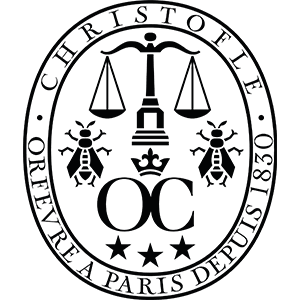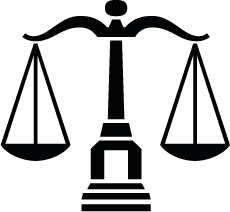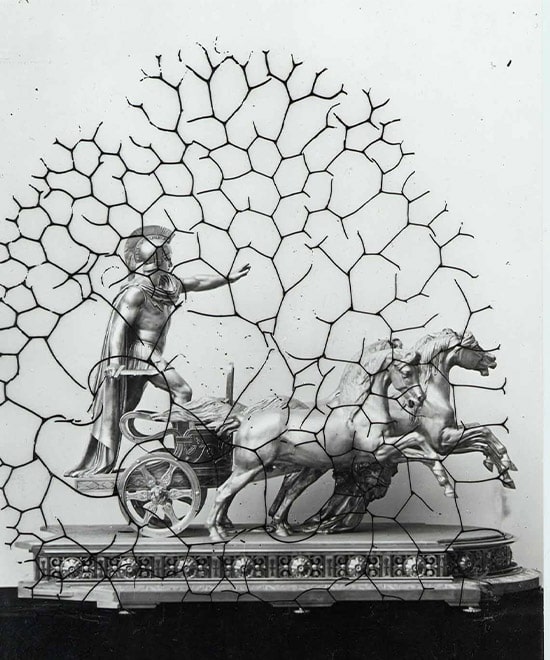Charles Christofle

Charles Christofle founded the company that bears his name in 1830. Originally a jeweler, he bought the patents silver plating and electrolytic gilding of gold in 1842.
As a goldsmith, he transformed ceremonial items and everyday objects: from jewelry to cutlery, gold smithery to sculptures, and decorative objects to tableware.
This is how silver came to be an integral player in art of living today.
The Jeweler
Charles Christofle was born in Paris in 1805 amongst small industrialists specializing in the manufacturing of buttons. The only boy in a family of four, he apprenticed with his brother-in-law Hughes Calmette, a manufacturer of "provincial" copper jewelry in 1821.
He took over the business 10 years later and in 1832 deposited his master's mark at the Garantie de Paris for "adornment". He developed his factory by positioning it towards export jewelry made of precious metal. The following year, he married Anne Henriette Bouilhet (1819 -1839) with whom he had two children, a daughter Marie Rose (1836-1918) and a son Paul (1838 -1907).
Patents for Glory
While searching for technical innovations, Charles Christofle took out a patent for the manufacturing of metallic fabrics in 1837. He then produced silver filigree pieces and hangings, epaulettes and braids for the army. Armed with this diverse skillset, he participated in the Exhibition of Products of French Industry in Paris in 1839. This first participation inaugurated a long series of national and universal exhibitions, where the House would win numerous awards. At one exhibition in 1844 in Paris, he received a gold medal.
In 1842, Charles Christofle acquired the patents for silver and gold metal electroplating. More durable and less harmful than traditional techniques, electroplating and gilding made it possible to manufacture pieces on a massive scale. Christofle was the only patent holder in France for 15 years. One of his first clients was the French King, Louis-Philippe I, who ordered a full service from him for the Chateau d'Eu in Normandy, a vacation spot for the French royal family.
THE VISUAL IDENTITY: CHRISTOFLE
Christofle returns to its roots and to the unbreakable connection that links the brand to its history.
For the brand's signature, the Art Recherche Industrie agency and its Artistic Director Ramdane Touhami opted to go back to the roots of this phenomenal success by reworking Christofle's original logos. Using an English cursive script, the Christofle logo has been given a free, modern twist.
It represents renewal, while also embodying the brand's past and future.
THE "CHRISTOFLE" TYPEFACE REDESIGNS THE BRAND'S LOGO
An integral part of the brand's new identity, the "Christofle" typeface stands out from the many modern-day variations of the Futura font often used.
The "Christofle" is a message in and of itself, having been designed and written by hand, with a vintage feel and a very particular rendering that only adds to its humanity.
It perfectly embodies Christofle's return to its legacy of expertise and excellence.

CHRISTOFLE GREEN
For its revamped visual identity, Christofle also readopted the colour green, chosen in the 19th century by the Christofle-Bouilhet family as the one unquestionable shade that best complements silver and its reflections.
Christofle green resembles olive green, a colour name in use in France since the late 17th century. This shade of green is associated with the powerful symbolism of the olive tree, an important element of Greek mythology. Often used to symbolise harmony, sophistication and empathy, olive green is a complex colour and a sacred and mystical shade of green. Green blends elegantly with silver, a precious metal that takes its name from the Indo-European word "arg", meaning white, bright, luminous.
A malleable and highly ductile metal, silver symbolises purity. Like a living thing, it ages gracefully; the more it's used, the more beautiful it becomes. Thanks to its luminous shine, silver was the most highly prized precious metal among the great designers of the 19th and 20th centuries, from Art Nouveau to the Bauhaus.
Aesthetically, silver will forever be synonymous with modernity and elegance.

THE CHRISTOFLE CREST
A sleeker version of the brand's historical hallmark, Christofle's crest is inspired by the maker's mark filed with the Paris Commercial Court in 1844.
It included the unmistakable symbols of Christofle's identity: scales, stars, a bee and the initials of its founder.
These originally read "CC" for Charles Christofle, and later became "OC" for Orfèvrerie Christofle [Christofle Silversmiths].

The scales
Scales are used to weigh solid silver and metals, and symbolise both the silversmithing profession and the ideal of Justice. They represent the perfect balance and the guarantee of authenticity – that is, the quantity of precious metal present in an alloy, which determines its quality.

The stars
Added to the crest in 1844, stars symbolise the firmament and eternity. Three stars, a common device in heraldry, signify the keen mind and splendour of the family to whom the coat of arms belongs.

The bees
Bees signify immortality and are one of the symbols of the French Empire. Napoleon chose the bee as his emblem to link his dynasty to the line of the Merovingian kings of old, thus replacing the Fleur de Lys associated with the Ancien Régime. Being busy creatures by nature, bees are also symbolic of dynamic French industry and its centuries-old expertise.

The crown
The crown represents royalty, honesty and virtue: more specifically, a three-pronged crown adorned with a cross denotes the authority of the King of France blessed with God's divine power and direct protection. The royal crown is also a reminder that, as early as 1844, King Louis-Philippe was among the first prominent customers to place his trust in Charles Christofle.
Recognition & Awards
The Universal Exhibition of Paris in 1855, the first to take place in France, recognized Christofle's technical and artistic expertise twice. The House exhibits main pieces of the epergne of Napoleon III. It is deployed on a 50m long table in the central room of the main building and measures almost 3m long. Several renowned sculptors have given figures and animals. Part of the above is carried out thanks to the new Christofle technique: massive electroplating developed by Henri Bouilhet (1830-1910). In 1852, Christofle was awarded a gold medal.
Part of this is now on display at the Museum of Decorative Arts in Paris. Although a bit worn, it is still a sight to behold. It was saved after being partially salvaged fron the Tuileries fire under the Commune. Table services have been delivered to numerous Ministries, Presidencies of the legislative bodies and the company of the maritime messaging services presented in 1855.
Charles Christofle died in 1863 leaving a prosperous and growing business to his son, Paul, and his nephew, Henri Bouilhet.



